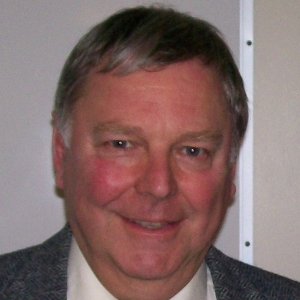Exam week at the University of Maine at Presque Isle was even busier than usual this spring with the addition of two scientists conducting National Science Foundation grant-funded research. Dr. Stuart R. Gelder, Emeritus Professor of Biology at the University of Maine at Presque Isle, joined forces with Michael Tessler, a doctoral candidate at the American Museum of Natural History in New York, NY, for the effort.
Tessler was on campus to collect and learn the techniques for identifying branchiobdellidans, or crayfish worms as part of a larger investigation, funded by his National Science Foundation Doctoral Dissertation Improvement Grant. Dr. Gelder guided the crayfish collecting to locations he had become familiar with during his 25 years at UMPI. Although campus examination week is not the best time to visit any campus, the two researchers were given ready access to newly renovated laboratory space and microscopes for their work.
“Working at UMPI was a real pleasure. With the resources at UMPI and Stuart’s knowledge, we accomplished a lot,” Tessler said. “We collected in beautiful places—freezing our hands a bit, saw many crayfish, and got in a lot of great microscopy of some amazing worms. Overall, this trip was instrumental for accomplishing my research goals, and I thank the UMPI community for all their support.”
Tessler’s research involves collecting crayfish worms, leeches and an unusual intermediate parasitic worm found only in the northern subarctic. He already has extensive experience with leeches, having collected them in Chile, China, Cambodia and other places. The most challenging worm he has to obtain is the intermediate representative, Acanthobdella, which lives on the blood and tissue of salmonid fishes. For this, he will be traveling to Lapland in late August.
Tessler was able to preserve some crayfish worms from Presque Isle for the next generation gene sequencing technique he is using. Unfortunately, only one species was found, but with access to the campus’s microscopes, it was possible for Dr. Gelder to show Tessler the essentials of how to identify any live branchiobdellidans. This will allow Tessler to identify additional species when he encounters them in Europe and North America.
“It is gratifying to be able to pass on some of the practical skills I developed during my research to the next generation of researchers,” Dr. Gelder said.
Both Gelder and Tessler thank the Biology faculty and administration for making them welcome and providing laboratory facilities.

